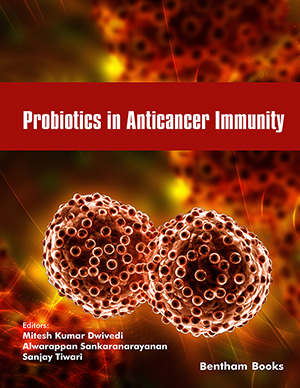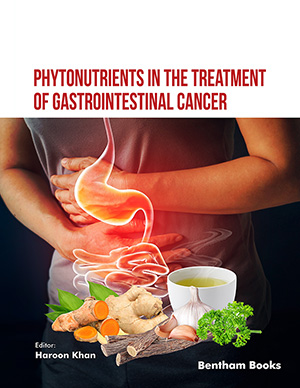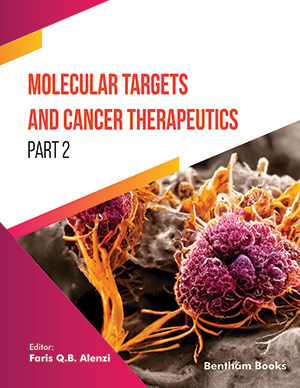Abstract
Radiotherapy (RT) failure has historically been mostly attributed to radioresistance. Ferroptosis is a type of controlled cell death that depends on iron and is caused by polyunsaturated fatty acid peroxidative damage. Utilizing a ferroptosis inducer may be a successful tactic for preventing tumor growth and radiotherapy-induced cell death. A regulated form of cell death known as ferroptosis is caused by the peroxidation of phospholipids containing polyunsaturated fatty acids in an iron-dependent manner (PUFA-PLs). The ferroptosis pathway has a number of important regulators. By regulating the formation of PUFA-PLs, the important lipid metabolism enzyme ACSL4 promotes ferroptosis, whereas SLC7A11 and (glutathione peroxidase 4) GPX4 prevent ferroptosis. In addition to introducing the ferroptosis inducer chemicals that have recently been demonstrated to have a radiosensitizer effect, this review highlights the function and methods by which ferroptosis contributes to RT-induced cell death and tumor suppression in vitro and in vivo.
Keywords: Ferroptosis, radiotherapy, radiosensitizer, radioresistance, cancer, cell death.
[http://dx.doi.org/10.2147/IJN.S290438] [PMID: 33603370]
[http://dx.doi.org/10.3390/cells8091105] [PMID: 31540530]
[http://dx.doi.org/10.1016/j.cbi.2023.110348] [PMID: 36646403]
[http://dx.doi.org/10.1007/s11547-016-0674-x] [PMID: 27601141]
[http://dx.doi.org/10.1007/s12094-018-1934-0] [PMID: 30136132]
[http://dx.doi.org/10.2174/1874471014666210120100448] [PMID: 33494694]
[http://dx.doi.org/10.1007/s12032-022-01892-9] [PMID: 36459301]
[http://dx.doi.org/10.1097/HP.0000000000001601] [PMID: 36069830]
[http://dx.doi.org/10.3390/ijms17010102] [PMID: 26784176]
[http://dx.doi.org/10.3389/fcell.2020.00041] [PMID: 32117972]
[http://dx.doi.org/10.1007/s13277-010-0042-8] [PMID: 20490962]
[http://dx.doi.org/10.1007/s10495-010-0524-6] [PMID: 20645005]
[http://dx.doi.org/10.1038/nrm2529] [PMID: 18971948]
[http://dx.doi.org/10.1038/nature24050] [PMID: 28976970]
[http://dx.doi.org/10.1038/nrc.2017.53] [PMID: 28751651]
[http://dx.doi.org/10.3389/fphys.2019.00139] [PMID: 30863316]
[http://dx.doi.org/10.2174/1389557522666220218123404] [PMID: 35184711]
[http://dx.doi.org/10.3389/fcell.2021.739392] [PMID: 34796174]
[http://dx.doi.org/10.1089/ars.2007.1893] [PMID: 18327971]
[http://dx.doi.org/10.2174/1871525720666220713101736] [PMID: 35838214]
[http://dx.doi.org/10.3389/fncel.2021.615372] [PMID: 34149358]
[http://dx.doi.org/10.1089/ars.2017.7115] [PMID: 28462584]
[http://dx.doi.org/10.1016/j.plipres.2018.11.001] [PMID: 30472260]
[http://dx.doi.org/10.1038/s41417-020-0170-2] [PMID: 32123318]
[http://dx.doi.org/10.1002/hep.28251] [PMID: 26403645]
[http://dx.doi.org/10.1111/febs.14608] [PMID: 30027602]
[http://dx.doi.org/10.7554/eLife.02523] [PMID: 24844246]
[http://dx.doi.org/10.1158/1535-7163.MCT-15-0548-T] [PMID: 26832794]
[http://dx.doi.org/10.1038/onc.2012.400] [PMID: 22964634]
[http://dx.doi.org/10.1080/15548627.2019.1659623] [PMID: 31441366]
[http://dx.doi.org/10.3389/fcell.2021.637162] [PMID: 33553189]
[http://dx.doi.org/10.3389/fonc.2022.917537] [PMID: 36091118]
[http://dx.doi.org/10.1186/s13045-019-0720-y] [PMID: 30925886]
[http://dx.doi.org/10.3892/or.2019.7189] [PMID: 31173262]
[http://dx.doi.org/10.1186/s13046-021-02012-7] [PMID: 34162423]
[http://dx.doi.org/10.1016/j.devcel.2019.10.007] [PMID: 31735663]
[http://dx.doi.org/10.1016/j.bbrc.2020.10.083] [PMID: 33162029]
[http://dx.doi.org/10.1002/ijc.28159] [PMID: 23505071]
[http://dx.doi.org/10.1016/j.canlet.2014.11.014] [PMID: 25444922]
[http://dx.doi.org/10.1016/j.yexcr.2020.112453] [PMID: 33358859]
[http://dx.doi.org/10.1016/j.bbrc.2016.08.034] [PMID: 27510639]
[http://dx.doi.org/10.18632/aging.103598] [PMID: 32726752]
[http://dx.doi.org/10.1016/j.bbrc.2021.08.080] [PMID: 34530350]
[http://dx.doi.org/10.1007/s10120-021-01159-8] [PMID: 33544270]
[http://dx.doi.org/10.1016/j.canlet.2019.08.007] [PMID: 31437477]
[http://dx.doi.org/10.1002/ctm2.390] [PMID: 33931967]
[http://dx.doi.org/10.1038/nature24637] [PMID: 29168506]
[http://dx.doi.org/10.1038/s41467-021-24859-2] [PMID: 34381026]
[http://dx.doi.org/10.1126/science.aaw9872] [PMID: 32241947]
[http://dx.doi.org/10.1038/s41467-020-20154-8] [PMID: 33311482]
[http://dx.doi.org/10.1158/0008-5472.CAN-20-3477] [PMID: 33483372]
[http://dx.doi.org/10.1016/j.bioorg.2019.102925] [PMID: 31003078]
[http://dx.doi.org/10.1080/21655979.2022.2036909] [PMID: 35246010]
[http://dx.doi.org/10.3389/fphar.2021.681223] [PMID: 34122108]
[http://dx.doi.org/10.2147/DDDT.S332847] [PMID: 34566408]
[http://dx.doi.org/10.1016/j.canlet.2018.01.051] [PMID: 29366803]
[http://dx.doi.org/10.3389/fonc.2020.00949] [PMID: 32596160]
[http://dx.doi.org/10.1158/1535-7163.MCT-21-0728] [PMID: 35131878]
[http://dx.doi.org/10.1038/s41419-023-05930-w] [PMID: 37488128]
[http://dx.doi.org/10.1016/j.freeradbiomed.2022.01.009] [PMID: 35038550]
[http://dx.doi.org/10.3389/fphar.2020.598555] [PMID: 33281606]
[http://dx.doi.org/10.1016/j.clon.2005.10.002] [PMID: 16477914]
[http://dx.doi.org/10.1002/adma.201904197] [PMID: 31595562]
[http://dx.doi.org/10.1158/2159-8290.CD-19-0338] [PMID: 31554642]
[PMID: 11358802]
[http://dx.doi.org/10.1038/s41422-019-0263-3] [PMID: 31949285]
[http://dx.doi.org/10.1073/pnas.1607152113] [PMID: 27698118]
[http://dx.doi.org/10.1016/j.celrep.2017.07.055] [PMID: 28813679]
[http://dx.doi.org/10.1038/s41392-020-00297-2] [PMID: 32883948]
[http://dx.doi.org/10.1016/j.cub.2018.05.094] [PMID: 30057310]
[http://dx.doi.org/10.1016/j.biopha.2022.112747] [PMID: 35240523]
[http://dx.doi.org/10.1007/s13238-021-00841-y] [PMID: 33891303]
[http://dx.doi.org/10.1038/nature24297] [PMID: 29088702]
[http://dx.doi.org/10.1021/acschembio.9b00939] [PMID: 31899616]
[http://dx.doi.org/10.1073/pnas.2017152117] [PMID: 33229547]
[http://dx.doi.org/10.1021/acsnano.8b05860] [PMID: 30458111]
[http://dx.doi.org/10.1038/nnano.2016.164] [PMID: 27668796]
[http://dx.doi.org/10.1186/s12951-022-01654-9] [PMID: 36242003]
[http://dx.doi.org/10.1016/j.actbio.2023.03.011] [PMID: 36931419]
[http://dx.doi.org/10.1016/j.jconrel.2022.12.004] [PMID: 36493951]
[PMID: 30753056]
[http://dx.doi.org/10.1021/acsnano.8b05602] [PMID: 30616348]
[http://dx.doi.org/10.1016/j.ejmech.2022.114905] [PMID: 36410168]
[http://dx.doi.org/10.1038/s41401-023-01062-1]
[http://dx.doi.org/10.1016/j.cej.2022.135309]
[http://dx.doi.org/10.1016/j.apmt.2022.101558]
[http://dx.doi.org/10.2217/nnm-2021-0286] [PMID: 34523352]
[http://dx.doi.org/10.1016/j.jhep.2022.01.009] [PMID: 35101526]
[http://dx.doi.org/10.1002/smll.202206415]
[http://dx.doi.org/10.1016/j.freeradbiomed.2018.10.426] [PMID: 30339884]
[http://dx.doi.org/10.3390/cells9061505] [PMID: 32575749]
[http://dx.doi.org/10.1038/s41467-021-22471-y] [PMID: 33854057]
[PMID: 35592903]
[http://dx.doi.org/10.1021/acs.jmedchem.2c00300] [PMID: 35687871]
[http://dx.doi.org/10.1186/s12943-021-01466-9] [PMID: 34983546]
[http://dx.doi.org/10.1080/13880209.2022.2066139] [PMID: 35575436]
[http://dx.doi.org/10.1016/j.bbrc.2022.03.026] [PMID: 35278883]
[http://dx.doi.org/10.1038/s41419-022-05082-3] [PMID: 35859150]
[http://dx.doi.org/10.1021/acschembio.2c00028] [PMID: 35128925]
[http://dx.doi.org/10.1021/acs.jmedchem.1c01775] [PMID: 35282680]
[http://dx.doi.org/10.7150/jca.58500] [PMID: 34659551]
[http://dx.doi.org/10.1186/s12951-021-01058-1] [PMID: 34627266]
[http://dx.doi.org/10.1016/j.redox.2023.102677] [PMID: 36989572]
[http://dx.doi.org/10.1038/s41589-018-0031-6] [PMID: 29610484]
[http://dx.doi.org/10.7150/ijms.54860] [PMID: 33746607]
[http://dx.doi.org/10.21037/atm-21-6942] [PMID: 35434035]
[http://dx.doi.org/10.1155/2022/1458143] [PMID: 35028002]
[http://dx.doi.org/10.1038/nchem.2778] [PMID: 28937680]
[http://dx.doi.org/10.1111/pin.12665] [PMID: 29624784]
[http://dx.doi.org/10.1080/10715762.2022.2157272] [PMID: 36519277]
[http://dx.doi.org/10.1016/j.yexcr.2021.112946] [PMID: 34826424]
[http://dx.doi.org/10.1021/acsnano.9b09426] [PMID: 32155051]
[http://dx.doi.org/10.2147/OTT.S272312] [PMID: 33116640]
[http://dx.doi.org/10.1038/s41419-023-05664-9] [PMID: 36823108]

























